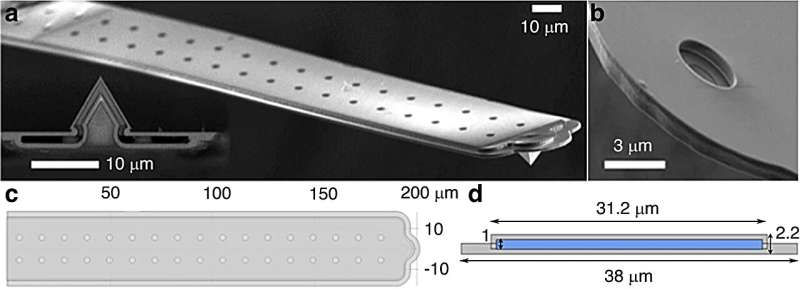This article has been reviewed according to Science X's editorial process and policies. Editors have highlighted the following attributes while ensuring the content's credibility:
fact-checked
peer-reviewed publication
proofread
New technique in tiny tool tuning: Making microscopic measurements more accurate

Fluidic force microscopy (FluidFM) combines the sensitivity of atomic force microscopy with microfluidics' capabilities, necessitating precise calibration of its cantilevers for reliable data. Traditional methods, however, struggle with the unique internal structure of FluidFM cantilevers, leading to inaccuracies.
A recent study published on February 18, 2024, in the journal Microsystems & Nanoengineering reports an innovative calibration technique for FluidFM micropipette cantilevers, pivotal for exact force measurements in microfluidic environments.
The FluidFM is a tiny tool used in microscopic environments to measure forces with high precision. Unlike traditional methods that often fall short due to the complex inner structure of FluidFM cantilevers, this new approach leverages the cantilever's resonance frequencies in both air and liquid environments.
By focusing on these frequencies, the method circumvents the common pitfalls of the widely-used Sader method, which can introduce errors due to its reliance on geometric and fluidic assumptions that don't hold up well for FluidFM's unique cantilever designs.
This innovative calibration technique was meticulously tested and validated on data obtained by the HUN-REN Nanobiosensorics Lab, Cytosurge, Nanosurf and Bruker, showing that it not only provides more accurate measurements but also simplifies the calibration process by reducing the effects of noise and eliminating the need for intricate experimental setups.
Dr. Attila Bonyár, the study's lead author, says, "Our method simplifies the calibration process, significantly reducing the influence of noise and eliminating the need for complex measurements, marking a significant step forward in the practical application of FluidFM technologies."
The new calibration method promises enhanced accuracy in force measurements, with profound implications for biological, biophysical, and materials science research. It enables the precise manipulation of cells and nanoparticles, opening new avenues for investigation in these fields.
More information: Attila Bonyár et al, Hydrodynamic function and spring constant calibration of FluidFM micropipette cantilevers, Microsystems & Nanoengineering (2024). DOI: 10.1038/s41378-023-00629-6
Journal information: Microsystems and Nanoengineering
Provided by TranSpread



















